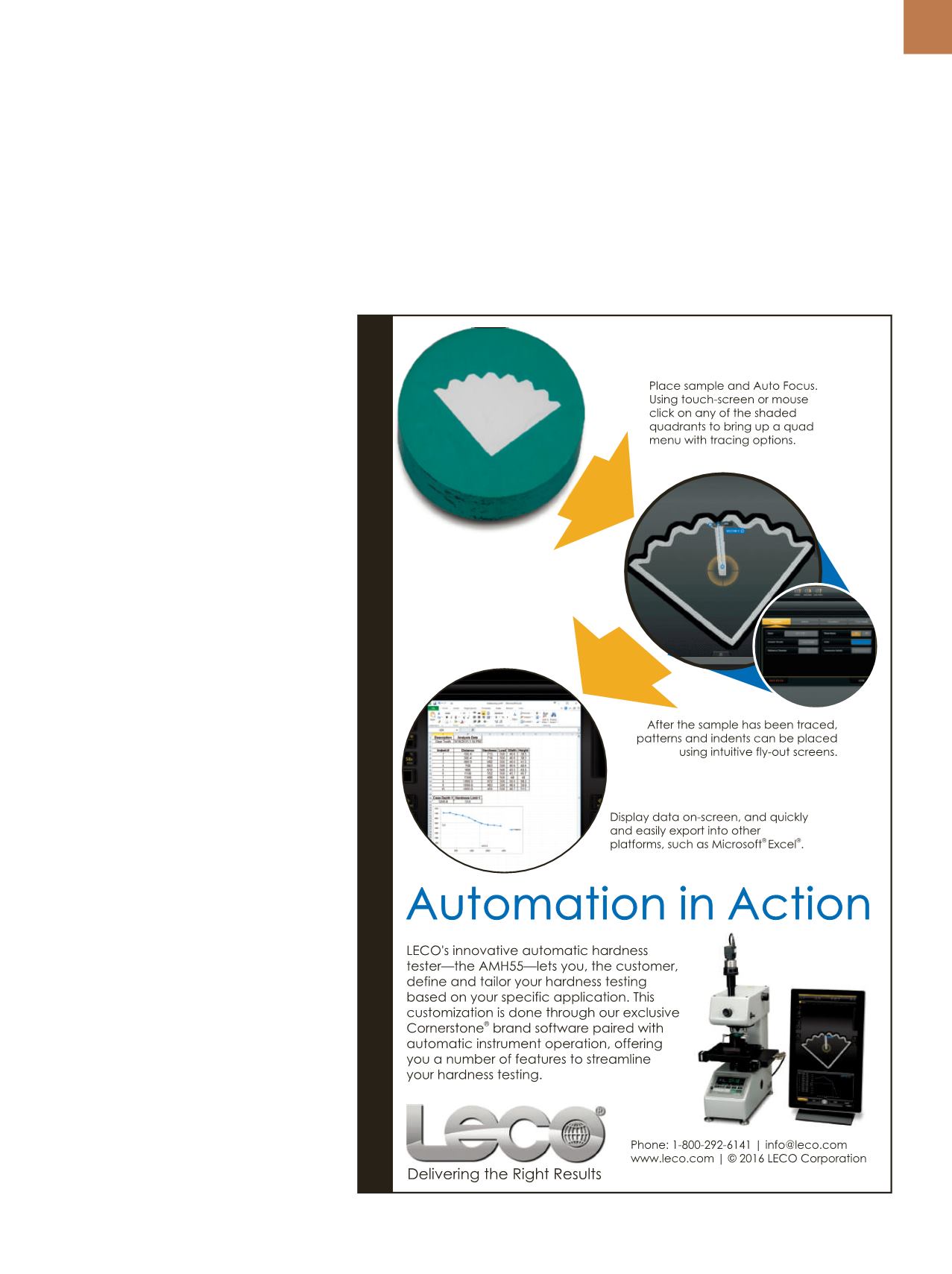

A D V A N C E D
M A T E R I A L S
&
P R O C E S S E S |
A P R I L
2 0 1 6
2 9
returned, what portion is relevant?). Re-
call is the quantitative fraction of rele-
vant instances that are retrieved (i.e., of
all possible relevant results, how many
were returned?).
Precision and recall could exhibit
an inverse relationship where increas-
ing the value of one term reduces the
value of the other. For example, a query
that maximizes recall (positive impact)
will likely decrease precision by return-
ingmore irrelevant results (negative im-
pact). Conversely, a query constructed
in a way that maximizes precision will
likely decrease recall by missing highly
relevant content.
Query-based applications (e.g.,
Internet search engines) offer an effec-
tive tradeoff where recall is maximized
at the expense of precision. These ap-
plications compensate by presenting
results in order of perceived precision
(relevance). The tradeoff is optimal for
traditional browsing where search re-
sults do not have to be very good. Re-
call is not important as long as you get
some highly relevant hits, and precision
is not important as long as the most rel-
evant hits are presented first. However,
such a tradeoff does not support ef-
fective scientific research, where recall
and precision are equally important.
W3C linked data do not require
such a tradeoff. Just as SQL is used to
query a relational database, SPARQL
provides the standard mechanism to
query linked data. Linked data en-
hances a user’s ability to discover new
information and also maximizes both
precision and recall by providing more
informed/complete answers. Linked
data query responses are more com-
plete by definition, because all data is
inherently linked. When an analytic is
applied over the complete set of data
retrieved from the Semantic Web (re-
call), more informed input is returned
(precision).
GETTING THERE FROM HERE
The MGI has spurred a variety of ap-
proaches to promote data sharing and
interoperability throughout academia,
government, and private industry. A
Semantic Web framework was estab-
lished to achieve three of the four goals
outlined in theMGI Strategic Plan, as not-
ed previously. There is also work aimed
at creating a world-class materials work-
force—the fourth goal of the MGI plan.
For example, ASM International’s Com-
putational Materials Data Network (CMD
Network) partnered with Northwestern
University, the University of Chicago, and
private technology firms to develop the
Center for Hierarchical Materials Design
(CHiMaD). The focus of this group is to
develop the next generation of compu-
tational tools, databases, and experi-
mental techniques to enable the design
of novel materials and establish a new
center of excellence for advanced mate-
rials research. Efforts like these facilitate
distribution of modeling resources to
LE-152i.ps
T:\MISC\ADS\LE-152\LE-152i.cdr
Thursday, March 10, 2016 9:45:08 AM
Color profile: Disabled


















